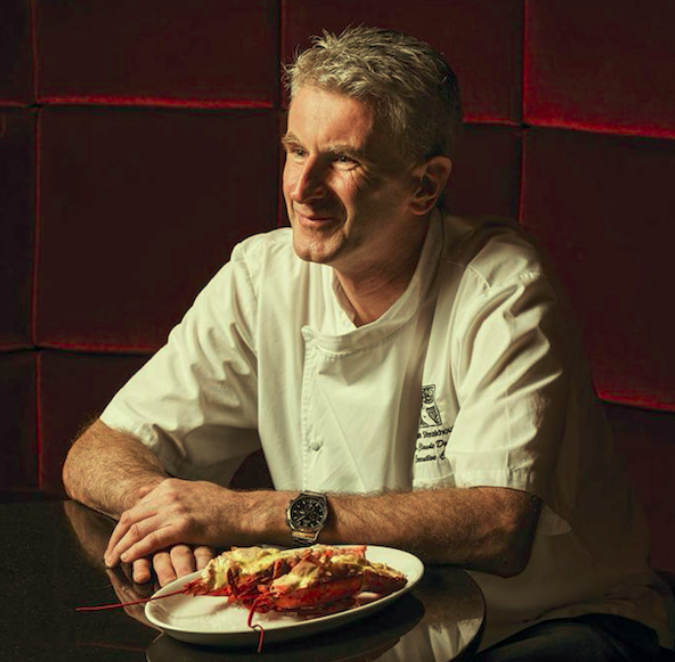
Combining a passion for travel and food, Chef Jean Claude Douguet shares insights about his love of both, as well as a delicious Lobster recipe in this article by Magnifissance Magazine.
From Explorer to Culinary Artist
Douguet says his passion for the culinary arts stems from “the people, and creating—the creation, discovering, learning.”
Douguet’s first love, interestingly, was travel. Throughout his career, he’s been able to combine his zest for food with travel, exploring France. It’s allowed him to discover each region’s specialty dishes and to learn what’s served during the holiday season.
For the holiday, Douguet shares with us a favourite recipe of one of his favourite types of food, lobster.
4 lobsters (3/4 to 1 pound each)
4 quarts court-bouillon
2 ounces butter
4 teaspoon olive oil
2 tablespoons chopped fresh tarragon
For the court-bouillon
4 quarts water
1 tablespoon coarse salt
1 quartered onion
1 tablespoon dried fennel seeds
1 tablespoon whole black peppercorns
4 bay leaves
1 lemon, halved and squeezed
For the sabayon
1 cup champagne
4 egg yolks
3 ounces clarified butter
Juice of half a lemon
Salt and Espelette pepper
Bring water to a boil, add salt, onion, fennel seeds, peppercorns, bay leaves, and lemon (including the peel).
Reduce heat and simmer 15 to 20 minutes.
Cook lobsters in the court-bouillon, 3 minutes for the tails and 6 for the claws. When cooked, split the lobster lengthwise from head to body. Shell them all, making sure to remove all cartilage. Reserve the clean shells for presentation.
Slice each lobster tail into five medallions. Toss them in a pan with butter, olive oil, and chopped tarragon. Add the claw meat.
Spoon the lobster meat back into the shells, putting the claw meat in the head. Season with freshly ground pepper.
Preparing the sabayon
In a medium-size mixing bowl, place egg yolks and half a cup of champagne.
Cook sabayon over low heat or over a bainmarie, whisking constantly for several minutes, careful not to let it sit or get too hot, or you’ll end up with scrambled eggs. A good sabayon should be smooth, frothy, and free of lumps.
The mixture will take form and turn pale. Continue whisking as it thickens. When it’s done, trails will appear at the bottom of the bowl when whisking. Remove from heat, season with salt and Espelette pepper, and slowly incorporate the clarified butter and the remaining half cup of the champagne.
Before serving, set your oven to broil.
Place your lobsters on a baking sheet, carefully spoon the sabayon over the lobster, making sure it doesn’t overflow.
Place the baking sheet in the oven fora few minutes to obtain a gratin effect,keeping an eye on it, as the sabayon can burn very easily. Remove from the oven when the surface is a light brown.
Serve immediately.